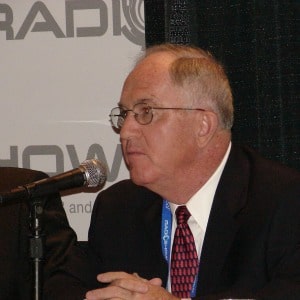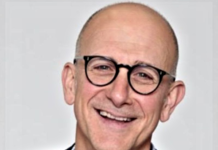
All week long we’ve been interviewing radio CEOs to get their thoughts on whether or not they believe ownership caps at the FCC need to be changed, eliminated, or whether they are fine as they are now. The NAB is working with broadcasters to come up with a plan to present to the Commission next month. Today’s interview is with Cromwell Media CEO Bud Walters.
Radio Ink: Are you in favor or against lifting ownership caps?
Bud Walters: Yes, but differently for top 50/100 markets vs small unrated markets.
Radio Ink: Do you have a specific number in mind?
Bud Walters: No, but as a concept, if there is cross-ownership (i.e. radio, newspaper, TV) there needs to be at least three media competitors.
Radio Ink: Is there a consensus among owners what should be done?
Bud Walters: Probably not much consensus among the larger companies but in smaller markets owners can see the value of one or two competitors.
Radio Ink: What do you say to the broadcasters who say the first round of deregulation ruined radio?
Bud Walters: It’s fair to say that not imposing national caps has caused significant disruption to the regulatory scheme. The outcome is one national player with tentacles in many businesses (radio, outdoor, concerts, rep firm, consultant, network, etc.) who’s both a competitor (local and national) and a supplier to traditional radio licensees (and others). No one (except Lowery Mays) envisioned such a roll-up and I doubt that he saw what is today. To get where iHeart is today competitively has caused a lot of issues for traditional broadcast licensees. No other company is in the same game, but all the larger broadcast companies are competing for the same national and local advertising dollar as iHeart. iHeart just has more platforms to bring to the table.
Radio Ink: We’ve heard the argument that caps need to be lifted in order to compete with FB and Google, etc. True, they are getting more and more ad money, but do you really think that argument is going to fly? Radio stations in nearly every market are playing so many commercials every hour, yet the revenue never grows. Isn’t the issue really a rate issue?
Bud Walters: When the FCC allowed SiriusXM to merge they in effect recognized that the national advertising dollar is agonistic to medium. They said Sirius and XM Radio are not competing with each other, but with the wider world. That is true in major markets today and that wider world includes Google and other social media players. Smaller-market stations do not compete for the national dollar like larger market players, but do compete with Google and social media. The case can be made for there to be one owner in a smaller community and probably two or three in a larger community. Nielsen should not be a determinant of market cap.
Radio Ink: Right now, in a lot of markets, owners that have multiple stations throw in the weak ones at no charge, killing the average unit rate and devaluing the product. How would being able to own more stations make that better and not worse?
Bud Walters: Strong performing programmed stations win out. Weaker ones offer choice. In 50 years, we have gone from 4,000 radio stations in America to 13,000-plus. We have more TV stations, but less daily newspapers. There are more shoppers and direct mail and of course social media. The advertising pie may not be finite, but it is competitive. Broadcasters have to find a way to compete in that field with more and better services, including social media. Owning a daily or weekly shopper (online or in print) and doing concerts and owning billboards fits into that if one wants to. All radio people know there is now no barrier to entry except to them as licensees of over-the-air facilities. The FCC needs to make the same kind of decision they did when they allowed SiriusXM to merge.
Radio Ink: If caps were to be lifted, what requirements or mandates would you suggest and be willing to accept in order to insure that the local market would be truly served — perhaps even including a certain prescribed percentage of local programming in the interest of maintaining a local, live presence? What would prevent the temptation of operating with an eye only on cost-cutting and consolidation, both which have proven not to serve radio — or its listeners’ — best interests?
Bud Walters: Advertising is a very competitive business and getting more so. In smaller markets, community involvement is the key to success doing business locally. Local news and information is a part of that success, but having a time constraint or percentage does not guarantee much of anything.
We have a lot of unknowns for the future regarding distribution, royalties, smart devices. Smaller and larger licensees have to be able to navigate these waters. In really small markets, one owner may be OK because the local advertiser pool will be smaller. Generally, two operators in small/midsize is desirable. Where larger markets are involved, multiple competitors makes sense. None of them should be restricted from providing other services, though for us “over the air” is primary with streaming, social, and promotion essential parts of what we do for our community advertisers.
Radio Ink: Look into your crystal ball. What do you think will happen in June?
Bud Walters: It’s not about owning five FMs and two AMs. Frankly, larger companies do not serve local small communities very well, but do a great job competing in large communities. Serving the community means something different in these circumstances. Smaller community media depend principally on local marketers for support and that demands local community involvement (and makes the case for that kind of ownership). Larger companies in top 50/100 markets deal principally with a national advertiser that is more ratings oriented and less focused on community service (unless pushed by a local franchisee/advertiser group).
Bottom line, broadcast licensees have to provide a strong service and should not be hamstrung in doing so because they are a broadcast licensee. If they are, they are likely hamstrung in competing for a marketing dollar and at a disadvantage. Radio has the greatest reach, but also needs to be able to compete across many platforms if the licensee desires to do so.
Read part one of our series HERE with Ed Levine
Read part two of our series HERE with John Caracciolo
Read part 3 of our series with Neuhoff CEO Beth Neuhoff HERE.





